click to get service View profile
Learn how to Design AI Products effectively with this complete guide covering key benefits, potential risks, and industry best practices. Perfect for designers, developers, and product managers aiming to build smarter, user-centric AI solutions.
In today’s tech-driven world, Designing AI products is no longer a futuristic concept—it’s a present-day necessity. From personalized recommendations to autonomous systems, AI is rapidly transforming how users interact with digital products. However, building AI-powered solutions goes beyond just algorithms; it demands thoughtful design, ethical considerations, and scalable strategies. In this blog, we’ll explore the key benefits, risks, and best practices involved in designing successful AI products that not only work intelligently but also deliver meaningful user experiences.
Benefits of AI Solutions
The AI boom is accelerating faster than ever. Between 2024 and 2030, the global AI market is projected to grow at a staggering 36.6% annually. Startups are emerging at record speed, and it’s becoming rare to find a major tech company without an AI-driven solution. Industry leaders like Microsoft, Meta, and NVIDIA are heavily investing in innovation—making it the perfect time to Design AI Products that stand out in this rapidly evolving landscape.
In other words, designing AI products is key to staying competitive in today’s market.
However, jumping onto the AI bandwagon just because it’s trendy isn’t a good enough reason to start development. Here are some solid motivations for designing an AI product.
Enhanced Data Collection and Processing
One of the biggest advantages when you Design AI Products is their ability to process massive volumes of data—far beyond human capability. Even more powerful is AI’s capacity to analyze that data in real time, enabling instant, insight-driven decision-making that adds real value to users and businesses alike.
Take PayPal, for example—an excellent case of how companies Design AI Products to solve real-world problems. By leveraging machine learning, PayPal can detect potentially fraudulent transactions in real time. This advanced capability allows the platform to minimize fraud more efficiently, ensuring greater security for both the business and its users.
Personalization and Customization
Customers welcome personalized, targeted experiences. In a recent IBM survey, 52% of respondents said they want stores to send them information, ads and offers that match their preferences.
AI delivers exactly what modern users expect—personalization at scale. Leading platforms like Netflix, Amazon, and Spotify Design AI Products that analyze user behavior to deliver tailored content and product recommendations. Beyond that, AI can dynamically adapt software interfaces based on user preferences, making digital experiences more intuitive, responsive, and user-friendly.
AI integration is no longer a differentiator — it’s a baseline expectation.
Your competitors already have it—or they’re racing to build it. In a world where users demand speed, ease, and relevance, they’ll naturally gravitate toward solutions that deliver exactly that. When you Design AI Products with personalized experiences at the core, you meet those expectations head-on—offering smarter, faster, and more user-centric interactions that truly stand out.
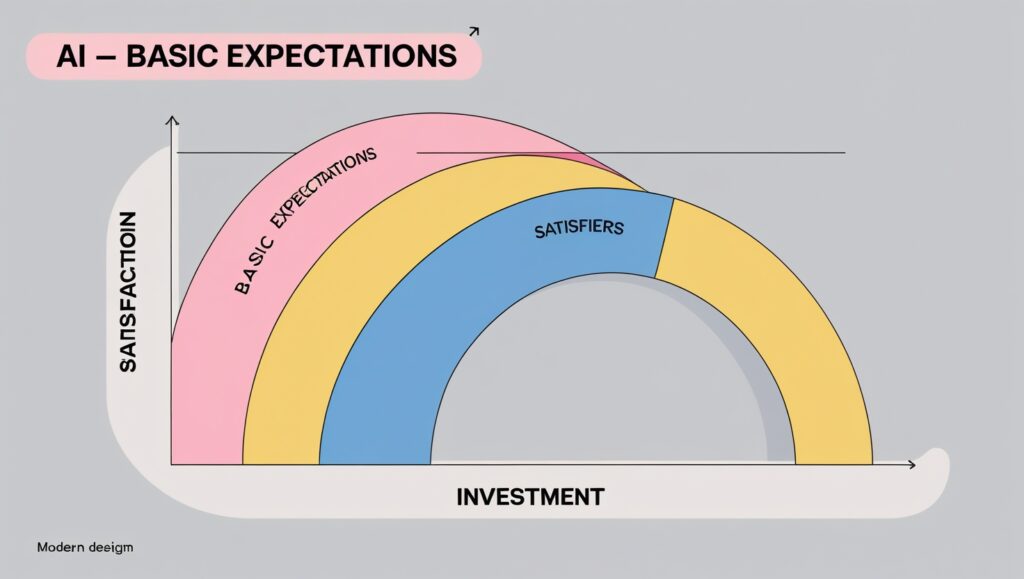
Automation and Process Optimization
AI can automate repetitive and mundane tasks, freeing up humans for more strategic or creative activities.
Example of the AI-powered product design — Blury, the innovative AI assistant, designed by Qubstudio.
For example, when companies Design AI Products like intelligent customer service chatbots, they empower support teams by automating routine inquiries. These AI-driven bots can efficiently handle basic requests, reducing the workload on human agents and allowing them to focus on more complex issues.
Improved Usability
AI can enhance UX in multiple ways. Personalizing user experience and optimizing processes are only the tip of the iceberg.
When you Design AI Products using natural language processing (NLP), you unlock more natural and seamless human-computer interactions—whether through voice commands or chat interfaces. This not only enhances user experience but also makes software more accessible to individuals who find traditional interfaces challenging.
Creativity Opportunities
AI still feels like magic to many people, and you can easily reflect this in the UI design of your AI product.
For instance, when you Design AI Products, you can make AI features more engaging by personifying them—like introducing a superhero character to represent your app’s AI capabilities. This not only makes the experience more memorable but also helps users clearly differentiate between AI-driven and standard functionalities.
Potential Pitfalls in AI Product Design
Every new project comes with risks, but when you Design AI Products, the stakes are even higher. Studies show that up to 80% of AI initiatives fail to deliver on expectations—often due to poor planning, lack of user insight, or technical challenges.
How can you avoid such a disappointing outcome? Consider these main pitfalls before starting implementation.
Mistrust Around AI
Your audience might be reluctant to use your AI solution because they simply don’t trust AI. The Gallup study reveals that as many as 40% of Americans believe that AI does more harm than good.
Despite all the hype, users don’t always embrace AI with open arms. Many AI products still fall short—producing inaccurate or biased results. When you Design AI Products, it’s crucial to address these concerns, especially since AI algorithms are often complex and lack transparency. This lack of clarity can lead to confusion and mistrust, making user confidence a key challenge in AI adoption.
Previous Negative Experience
Potential users may have had negative experiences with AI solutions and might be reluctant to give them another chance.
For example, as few as 30% of shoppers who have ever tried a virtual assistant are content with their experience, and 20% don’t even want to repeat it.
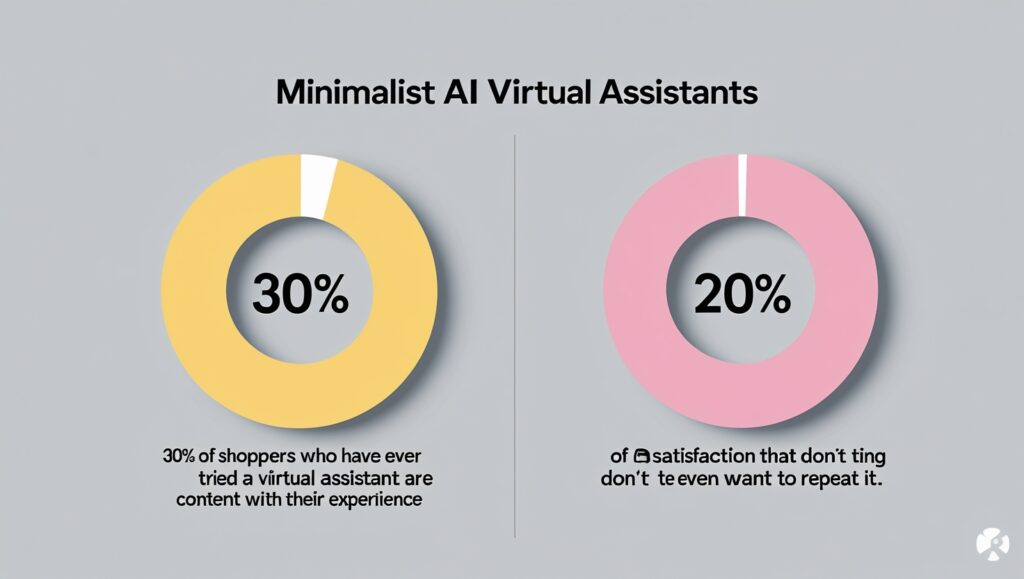
Technical Feasibility
When you Design AI Products, be prepared for a resource-intensive journey. One of the biggest investments lies in training models to ensure they’re accurate, reliable, and free from bias. This process demands massive computational power and access to high-quality data. On top of that, collecting, cleaning, and labeling the data adds another layer of complexity and cost.
Data Security Risks
When it comes to designing AI products, collecting, storing, and using large amounts of training data presents a major challenge: securing this data throughout the process.
It’s no surprise that data security remains a major concern when you Design AI Products. According to a recent Pew Research Center study, 53% of respondents believe AI does more harm than good in protecting their personal information. This growing mistrust highlights the urgent need for transparency and robust privacy measures in AI-driven solutions.

AI-as-a-Service Implications
AI-as-a-Service solutions can save a lot of effort since you don’t need to build and train your model from scratch.
However, relying on external AI providers means sharing all your data with a third party, which greatly increases data security risks. It also threatens system stability, as your AI features depend on an external API.
Challenges of Building UI/UX Design for AI Products
AI is a complex technology, and your job is to make it easy for users to understand. Your design should clearly show how the AI behind your solution works.
For this to happen, your designers must understand AI themselves, which means they’ll need to work closely with the project engineers. Facilitating this level of teamwork might be tricky.
Sure, designing AI products isn’t always easy. But still, how can you make the most of AI despite its complexities, risks, and potential users’ mistrust? Building the right process is the key.
Process of AI Product Design
There are essentially two main approaches when you Design AI Products. One is to build a solution entirely from scratch, tailored with AI at its core. The other is to enhance an existing product by integrating AI capabilities. A great example is Zendesk—a customer service platform that wasn’t initially built with AI but has since been upgraded to include intelligent features for smarter support.
Whichever approach you take, your process should include the following steps.
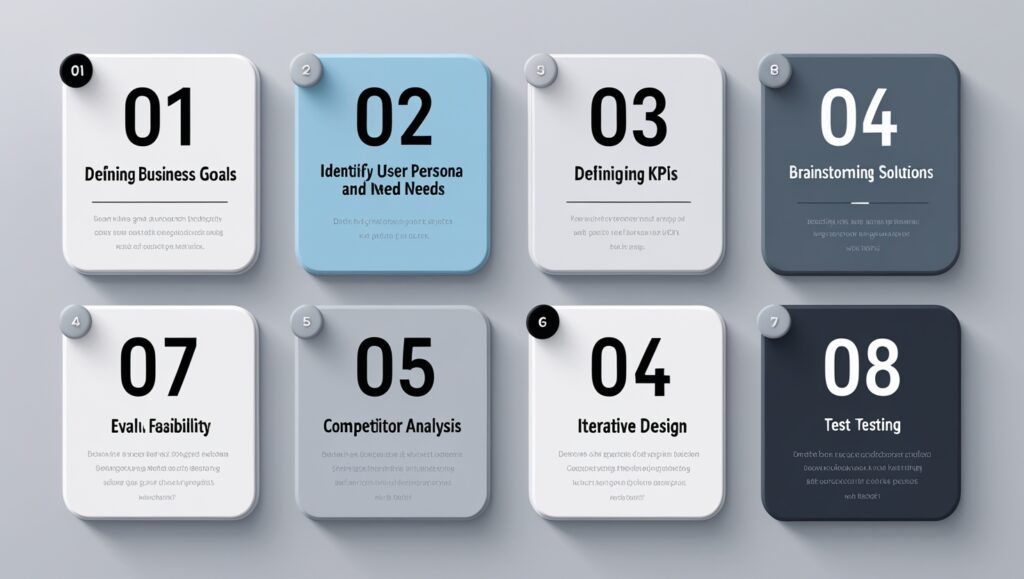
1. Define your business goals. If upgrading an existing product, use as-is and to-be maps to visualize the current state and the one after integrating AI.
2. Determine your user persona, their needs, and product journey.
3. Identify your KPIs. What can you improve in your user’s journey with the help of AI?
4. Brainstorm possible solutions to your user’s problems. Imagine having unlimited resources to consider a wide range of options and choose the best one. Embrace the problem = opportunity mindset.
5. Analyze competitors to glean insights and best practices.
6. Evaluate technical feasibility, drawing from the competitors’ solutions and other successful AI use cases.
7. Implement designs and code in small, iterative steps, allowing for a quick rollback of changes.
8. Test your product thoroughly, with a strong focus on user acceptance tests.
While this step-by-step guide offers a bird’s-eye view of the AI product design process, following it alone doesn’t guarantee success. Let’s zero in on the key ingredients of a high-performing AI solution.
Best Practices for Designing AI Products
AI product design is different from other software development projects. You need to account for the technology’s complexity, challenges in handling large amounts of data, ethical considerations, and beyond.
we’ve built a diverse portfolio of AI-powered solutions—from advanced risk management platforms to other innovative digital products. This hands-on experience has given us deep insight into what it takes to Design AI Products that are both intelligent and user-centric. Based on that, here are the core principles that guide our approach.
Estimate Your Risks
AI product design comes with its own set of risks. Assessing business, customer, and technical risks is paramount to determine if the solution will be viable.
In short, it all boils down to giving honest answers to several questions. Below are the most important ones, organized by risk type:


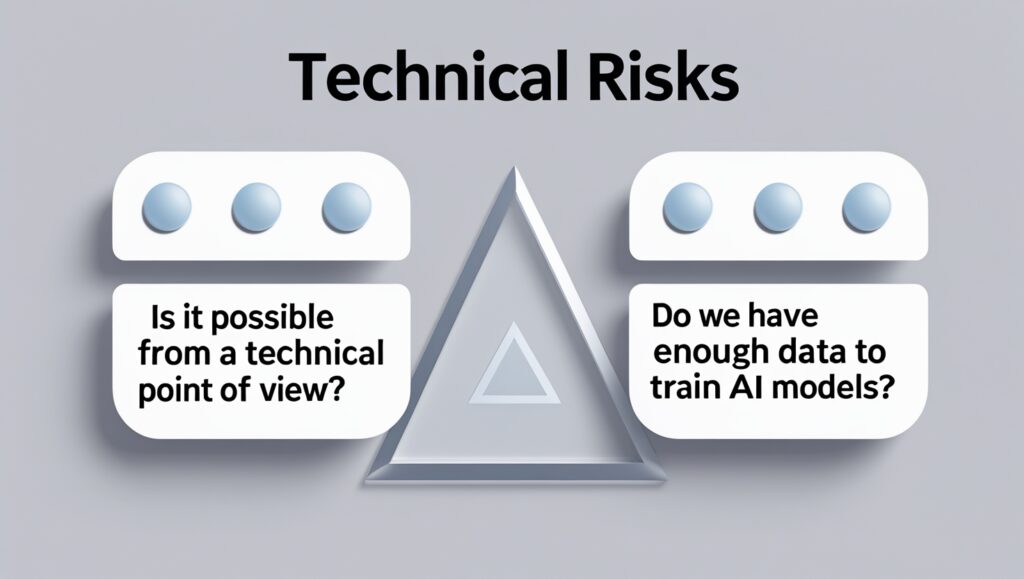
Answering these key questions will help you evaluate whether it’s truly feasible to Design AI Products in your specific context. For even deeper clarity, consider using the AI survival curve—a helpful tool for estimating your product’s likelihood of long-term success.
Use the Consideration x Context Framework
From our experience, the Context x Consideration framework is a powerful tool when you Design AI Products to ensure they align with real market needs. This framework functions like a coordinate system, helping teams evaluate both the environment in which the product will operate and the key factors influencing user adoption.
- The X-axis signifies Consideration, or the effort required for accurate decision-making combined with the level of mistake tolerance;
- The Y-axis signifies Context, or the amount of data a model needs to make the right decision.
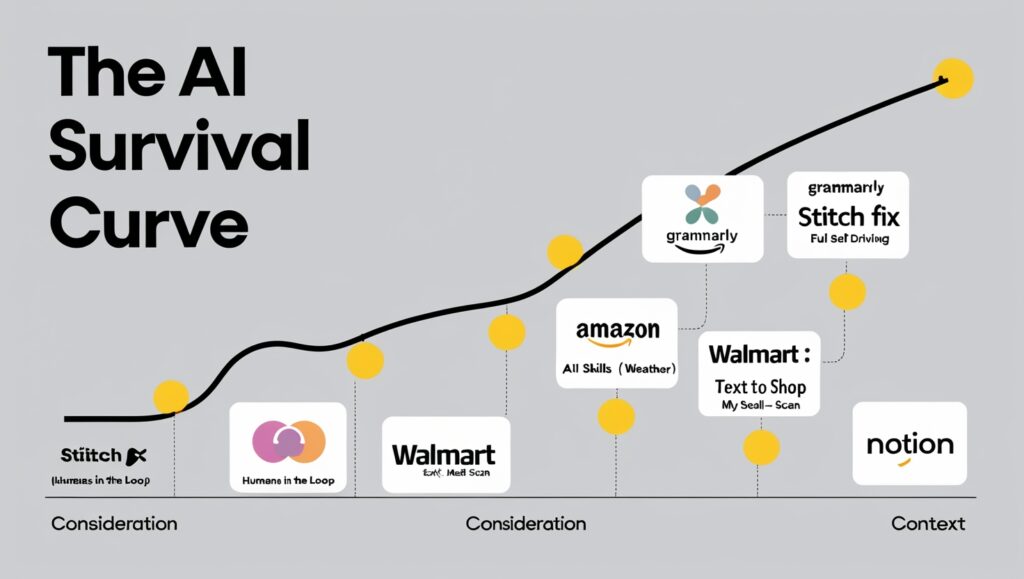

For example, Grammarly lies evenly with the curve: it needs a moderate level of mistake tolerance (consideration) and a moderate amount of context (knowing grammar rules, not all web content).
In contrast, fully autonomous vehicles rely extensively on driving data for model training but offer zero tolerance for errors. When you Design AI Products like these, they often fall above the AI survival curve—signaling a lower probability of success due to the high risk and complexity involved.
Understand Your User Personas
Step into your user persona’s shoes when building UX design for AI products.
You could say this principle applies to all software products—and you’d be absolutely right. Prioritizing customer needs is the foundation of any successful solution. But when you Design AI Products, it’s equally important to account for the added layer of technological complexity that comes with machine learning, data, and algorithmic behavior.
Your target user is rarely a data scientist, so focus on simplifying the product journey. Avoid intricate graphs and instead present data in a human-friendly, easy-to-understand format.
Build a Working User Adoption Strategy
People are still getting used to AI, so it’s important to build confidence in your users.
- Complement your fail-proof mitigation plan against legal and reputational risks with a robust communication strategy. Users should understand how your AI algorithm works and what data it uses.
- Empowering users with control over AI functions can also improve acquisition rates. Clearly communicate what AI does and doesn’t do in your product by giving AI features a distinct style in the system.
- You might also allow users to turn off AI functionality whenever they want.
- Finally, keep tabs on user feedback and regularly address their concerns.
Example of an AI-powered CV builder, designed by Qubstudio. The personal AI-assistant brings a unique style and efficiency to the product.
Keep Up-to-Date with Technical Capabilities
AI isn’t magic — it’s a technology with its own set of limitations. Keep this in mind as you conceptualize your next AI product.
To effectively Design AI Products, staying informed about AI’s evolving capabilities and limitations is essential. Follow trusted sources and official updates from leading AI providers like OpenAI to gain valuable insights into the current and future state of AI technology.
Another smart idea is to analyze existing solutions, including those in MVP and beta stages, and keep an eye out for AI integration updates from industry giants like Microsoft, Adobe, and Salesforce.
Conclusion
Launching an AI product presents a powerful opportunity for any business to stand out in a competitive market. However, the risks are just as significant—a promising idea can quickly become a costly misstep if not executed properly. When you Design AI Products, it’s essential to navigate common pitfalls carefully. Fortunately, by following the best practices outlined in this article, you can reduce risks and set your AI solution up for long-term success.
If you’re looking for support beyond this introduction on how to Design AI Products, we’re here to help. As a digital product design agency with deep expertise in building AI-powered solutions and integrating AI into existing platforms, we specialize in crafting intuitive, trust-driven UI/UX designs that not only enhance user experience but also maximize ROI.

